The ability to lead effectively not only propels companies towards achieving their strategic goals but also fosters a culture of empowerment, collaboration, and adaptability among team members.
This article delves into a comprehensive collection of leadership statistics that shed light on various aspects of leadership in today's context. We explore the impact of leadership styles on organizational success, the correlation between effective leadership and employee engagement, and the emerging trends that are shaping the future of leadership.
We explore different types of leadership statistic, including:
- Leadership challenges
- Leadership development statistics
- Leadership skills
- Leadership demographics
- Mental health
- Diversity initiatives
- Company culture statistics
- Leadership impact
Through an analysis of these statistics, we aim to provide insights that will help current and aspiring leaders understand the key traits, behaviors, and strategies that contribute to effective leadership.
Leadership challenges
1. 45 percent of CEOs are not confident that their companies would survive more than a decade on their current path. (PWC)
2. The top three leadership concerns are: attracting and retaining top talent (59%), developing the next generation of leaders (50%) and maintaining and engaged workforce (45%). Workforces are fragile and mobile like never before. (DDI)
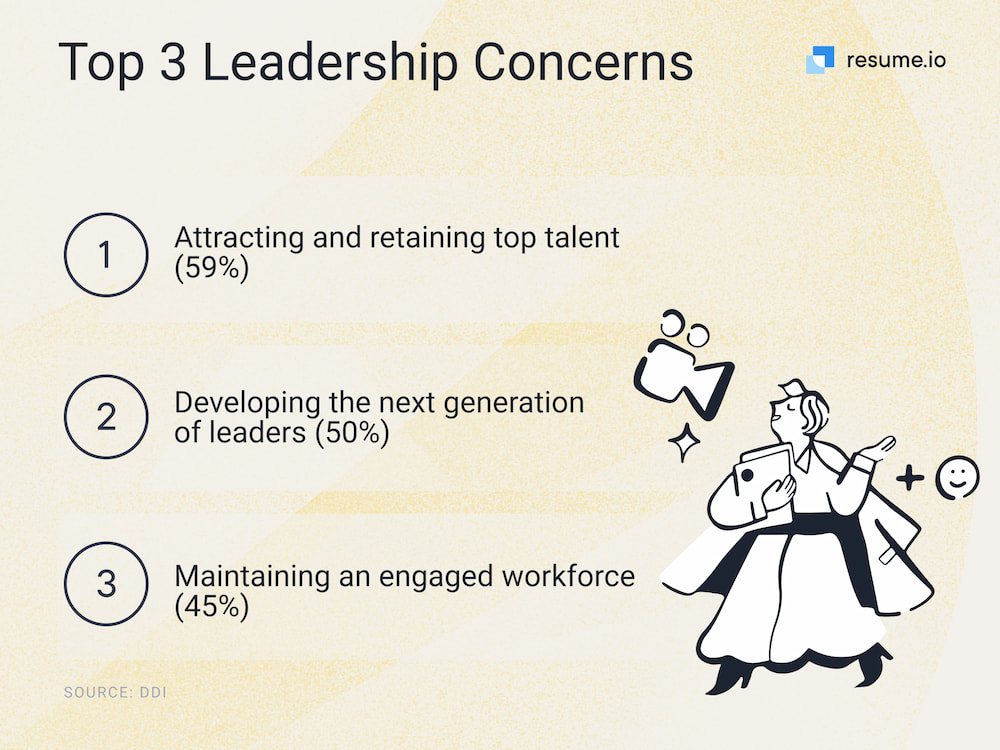
3. Only 24 percent of leaders are worried that their people will have issues with picking up emerging technologies. (DDI)
4. 40 percent of employees rated leaders as good or excellent in 2022, a decrease from 48 percent in 2020. This may show an impact from the pandemic. (DDI)
5. 23 percent of employees are actively engaged at work, 58 percent are “quiet quitting” (not engaged) and 18 percent are “loud quitting” (actively disengaged). (Gallup)
6. Only 25 percent of CEOs described lack of support from the board as even a moderate constraint on their reinvention efforts, and only 30 percent of CEOs said the same of internal stakeholders. (PWC)
7. “Quiet quitting” employees know what they would change about their workplaces. 41 percent would change engagement or culture, 28 percent would change pay or benefits, 16 percent would improve the wellbeing environment of their employers. (Gallup)
8. A survey of CEOs by Fortune found only 7 percent of CEOs think their company is building effective global leaders. Another survey found only 21 percent of employees believe their managers effectively lead them. (O.C. Tanner)
Leadership development statistics
9. Only 12% of companies in 2023 report confidence in the strength of their leadership “bench” when it comes to replacing top employees. In 2018 this percentage was 18%, a 30% drop in confidence over five years. (DDI)
10. Companies with strong leadership succession plans (benches) are 6 times more able to engage emerging talent and 5 times more likely to have plans in place to prevent burnout. (DDI)
11. Within talent and people management, 86 percent of respondents say coaching employees and 56 percent say development of employees are the top two ways they add the most value. (McKinsey)
12. We found 60 percent of leaders connect the purpose of employees’ work to what employees value, but fewer than half (44 percent) of leaders completely understand what their employees do. (O.C. Tanner)
13. Employers that provided effective leadership development at all levels were far more likely to rank for top financial performance, with 54 percent reporting that they are in the top 10% of their industries. (DDI)
14. 29 percent of HR leaders believe that leaders receive support that fits their unique needs. (Gartner)
15. In 2022, the training industry estimates that companies spent an average of 26% of their training budget on external (outsourced) suppliers and approximately 64% on internal resources. (Training)
16. Only 23 percent of leaders say they want more coaching from their managers, and they rate coaching from their manager as one of their least desired forms of learning. (DDI)
17. There are three development experiences that high-potential leaders prefer: 85 percent want coaching—from internal and external coaches—to help them develop as leaders. 71 percent want instructor-led training to strengthen leadership skills. 56 percent want to use assessment to diagnose strengths and areas for improvement. (DDI)
Leadership skill stats
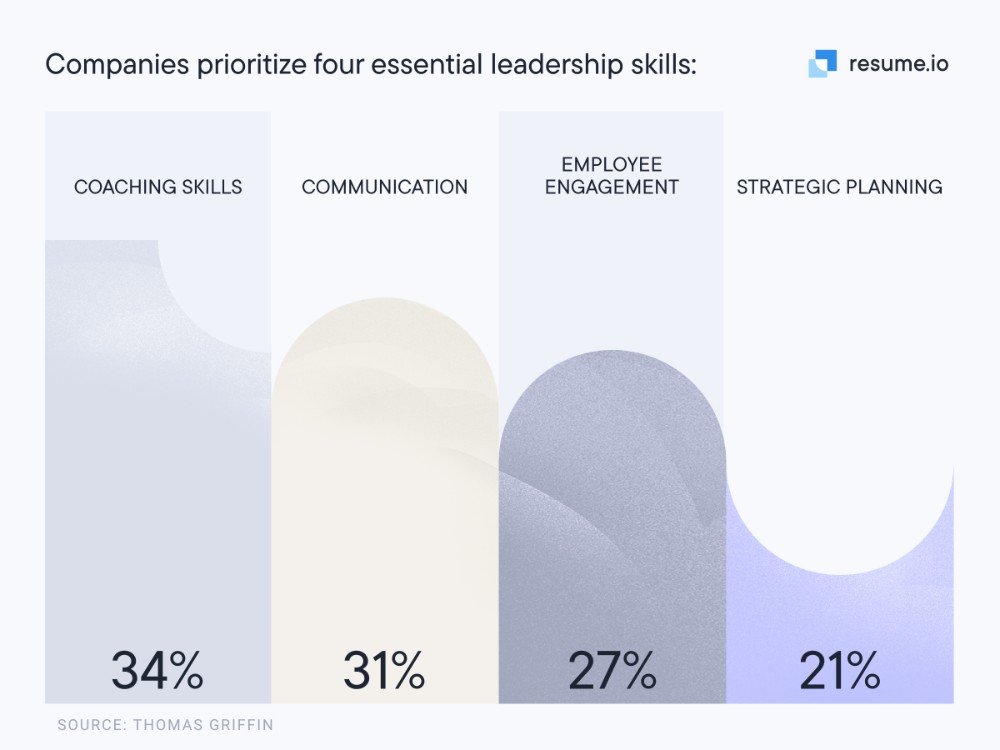
18. The top five leadership skills are: identifying talent, strategic thinking, managing change, decision-making, and influencing others. While leaders believe these skills are crucial to success, only 12 percent rate themselves as effective in all five. Worse, only 29% of companies train for these critical skills. (DDI)
19. 83 percent of respondents report a skills gap in their organization and 78 percent expect their organizations will have a skills gap in the future. Almost three-quarters say that the skills gap affects their organization’s service delivery, customers, or future growth. (Talent Development)
20. The most common tactic for addressing leadership skill gaps over the past five years has been hiring (66 percent of respondents). Leadership skill building is the second-most common tactic, cited by 56 percent of respondents. (Glassdoor)
21. The highest performing leaders are 800% more productive than the average performers in the same role. (McKinsey)
22. 87 percent of respondents say their company is either experiencing skill gaps now, or expect them within a few years, with 44 percent of respondents saying their organizations will face skill gaps within the next five years, and another 43 percent report existing skill gaps. (Glassdoor)
23. The biggest current and future gaps noted are in communication, critical thinking, and managerial and supervisory skills, showing that organizations need to focus on soft skills development programs. (Talent Development)
Leadership demographics
24. 54% of companies saw their employee turnover rate increase over the past year. (DDI)
25. When flexible arrangements were not supported, leaders were 1.3 times more likely to indicate an intention to leave their company within the year. This trend was even higher among workers under the age of 35, who were 2.2 times more likely to plan to leave companies where flexible work was not supported. (DDI)
26. For high-potential employees within the first three years of their tenure, only 12 percent said they intend to leave their companies within the year. By contrast, high-potential employees who have been with the company for three years or longer are 25% more likely to be at risk of departure. (DDI)
27. The organizational cost of employee turnover is staggering and depends largely on their level; entry-level employees are between 30-50% of their salary, mid-level employees are roughly 150% of their salary, and a senior-level employee will cost 400% of their salary. (HR Exchange)
28. 39 percent of employees are actively planning to leave their jobs in the next 3-6 months. (McKinsey)
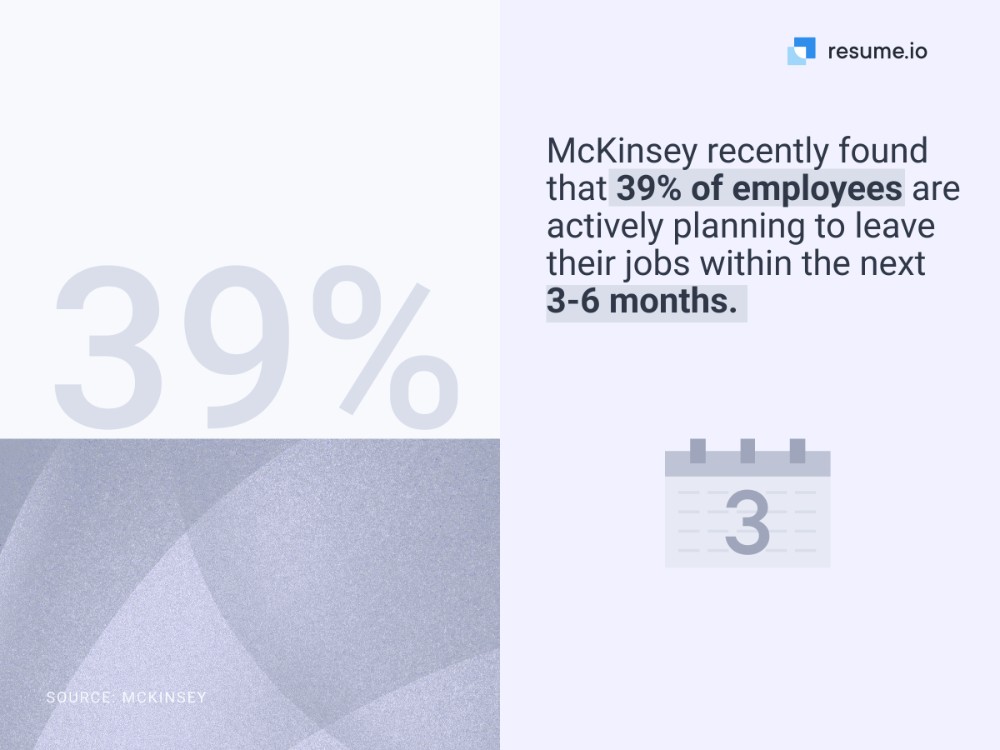
Leadership mental health
29. Signs of burnout are growing, with 72 percent reporting that they often feel exhausted after work in 2023, an increase from 60 percent in 2020. (DDI)
30. According to The World Health Organization, stress has been called the health epidemic of the 21st Century and is estimated to cost American businesses up to $300 bn a year. (HR Exchange)
31. 44 percent of employees felt stressed during a lot of the previous day and 21 percent of employees felt anger during a lot of the previous day. (Gallup)
32. Taking time off was the most effective method for diminishing stress according to 27 percent of managers, but it was utilized by less than a quarter of them. (Zen Business)
33. Leaders facing mental health and wellbeing challenges are 4 times more likely to want to leave their employers. (McKinsey)
34. Nearly half of managers with over 30 employees under their supervision reported severe stress at work. (Zen Business)
35. A survey at Imperative found that people who engage in peer coaching are 65 percent more likely to feel fulfilled; 67 percent more likely to report being a top performer; 73 percent more likely to report feeling a sense of belonging; and 50 percent more likely to expect to stay in their job for more than 5 years. (Glassdoor)
36. 89 percent of female leaders and 79 percent of male leaders felt that it was necessary to hide their emotions from direct reports and colleagues. Managers were more than twice as likely to think their employees would be “not at all sympathetic” to their stress. (Zen Business)
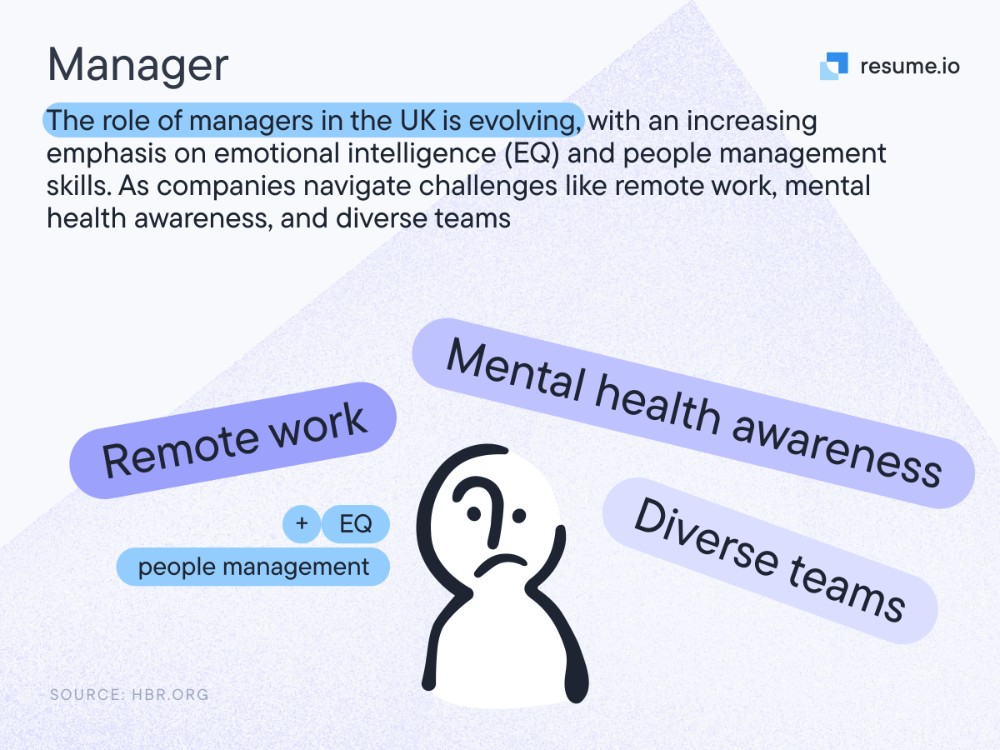
Diversity statistics
37. Companies with strong succession plans have 22% more women leaders and 36% greater leader background diversity than companies with weak benches. (DDI)
38. For example, individuals from underrepresented racial and ethnic groups hold 22.2% of board seats across Fortune 500 companies. This is certainly an improvement from 2020, when the proportion of UR&EG board members was 17.5%. (Deloitte)
39. Although 61 percent of companies point to DEI as a top manager capability, only 28 percent of people managers say their company recognizes DEI in performance reviews. (McKinsey)
40. Hispanic/Latino(a) board representation has remained relatively flat since 2004. By 2060, the Hispanic population will be almost 30% of the United States population, yet fewer than 5% of corporate board positions are held by Hispanics, which makes us the community with the largest disparity. (Deloitte)
41. Roughly 80 percent of women want to be promoted to the next level, compared with 70 percent in 2019. And the same holds true for men. Women of color are even more ambitious than white women: 88 percent want to be promoted to the next level. (McKinsey)
42. 70 percent of respondents say that their organizations express transformative DEI ambitions, but only 47 percent say that they have the infrastructure to realize those ambitions. (McKinsey)
43. 78 percent of women who face microaggressions self-shield at work, or adjust the way they look or act in an effort to protect themselves. For example, many women code-switch—or tone down what they say or do—to try to blend in and avoid a negative reaction at work. Black women are more than twice as likely as women overall to code-switch. (McKinsey)
44. Women from underrepresented racial and ethnic groups gained more board seats than White women (127 compared to 95 seats), and African American/Black women made significant gains in board seats since 2020, gaining 86 board seats, a 47.0 percent increase in seats. (Deloitte)
45. Sixty percent of companies have increased their financial and staffing investments in diversity, equity, and inclusion over the past year. And nearly three in four HR leaders say DEI is critical to their companies’ future success. (McKinsey)
46. Women and underrepresented racial and ethnic groups (UR&EG) hold 46.5 percent of Fortune 100c and 44.7 percent of Fortune 500 board seats. (Deloitte)
Company culture
47. Leaders who work remotely are 22 percent more likely to trust senior leaders compared to those who work in person. (DDI)
48. Leaders who can be vulnerable are trusted 5.3 times by their employees, while leaders who admit to their failures are trusted 7.5 times by employees. (DDI)
49. 62 percent of leaders communicate what success looks like and 52 percent make others aware of their employees’ success. (O.C.Tanner)
50. 57 percent of employees feel appreciated by their leaders. (O.C. Tanner)
51. Fewer than half (49 percent) of leaders working in a hybrid role reported being definitely engaged in their work and only 30 percent reported that their work energizes them, about 10 percent less than their in-person and remote counterparts. (DDI)
52. Women who experience microaggressions—and self-shield to deflect them—are three times more likely to think about quitting their jobs and four times more likely to almost always be burned out. (McKinsey)
53. Engagement has 3.8 times as much influence on employee stress as work location. In other words, what people experience in their work—their feelings of involvement and enthusiasm—matters more in reducing stress than where they are sitting. (Gallup)
Leadership impact
54. When leaders did not view their company’s leadership as effective with interpersonal skills, they were 3.5 times more likely to leave within the year. (DDI)
55. 90 percent of HR professionals believe that leaders should focus on the human aspects of leadership. Another Gartner survey of nearly 3,400 employees, also conducted in March 2022, found that just 29 percent report that their leader is a human leader. (Gartner)
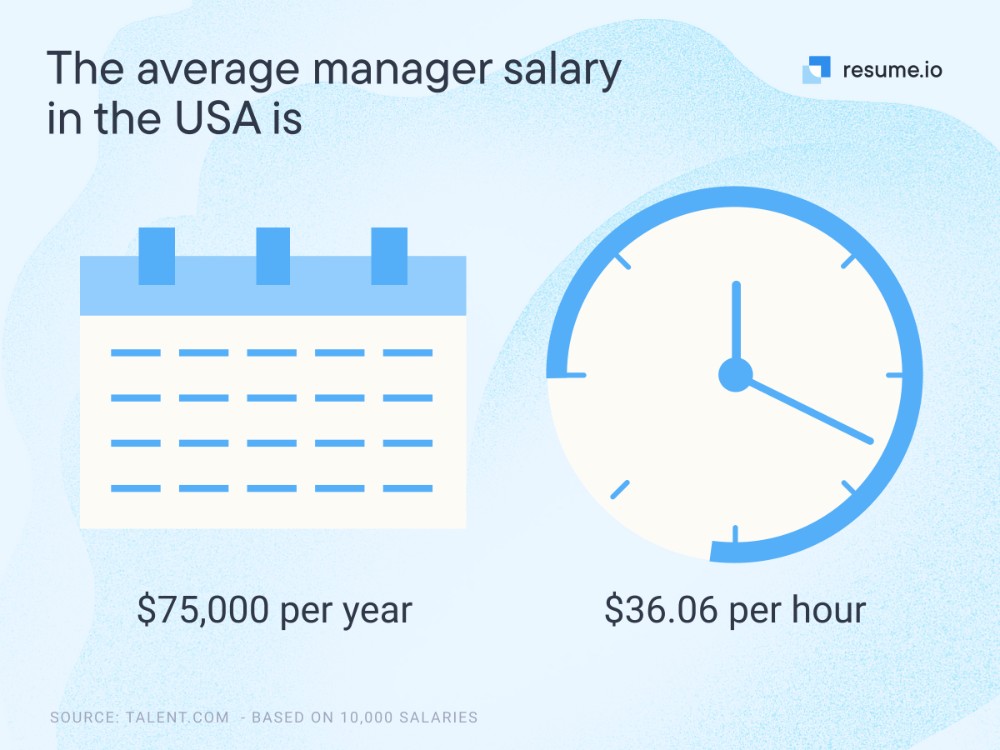
56. When leaders feel a strong sense of purpose, they are nine times more likely to feel engaged in their role and twice as likely to intend to stay at the company for the next year. (DDI)
57. A study found that organizations that had the most effective leadership development programs were 6–7 times more likely to extend development opportunities across the organization. (O.C. Tanner)
58. Companies with engaged employees average 147% higher earnings per share, but unfortunately, research shows only 30 percent of U.S. employees are engaged. (HR Exchange)
59. In many organizations, 20-30% of critical roles aren’t filled by the most appropriate people (McKinsey)
60. Research shows only about half (52 percent) of leaders introduce their employees to potential mentors (O.C. Tanner)
61. (56 percent) encourage employees to collaborate outside their teams. (O.C. Tanner)
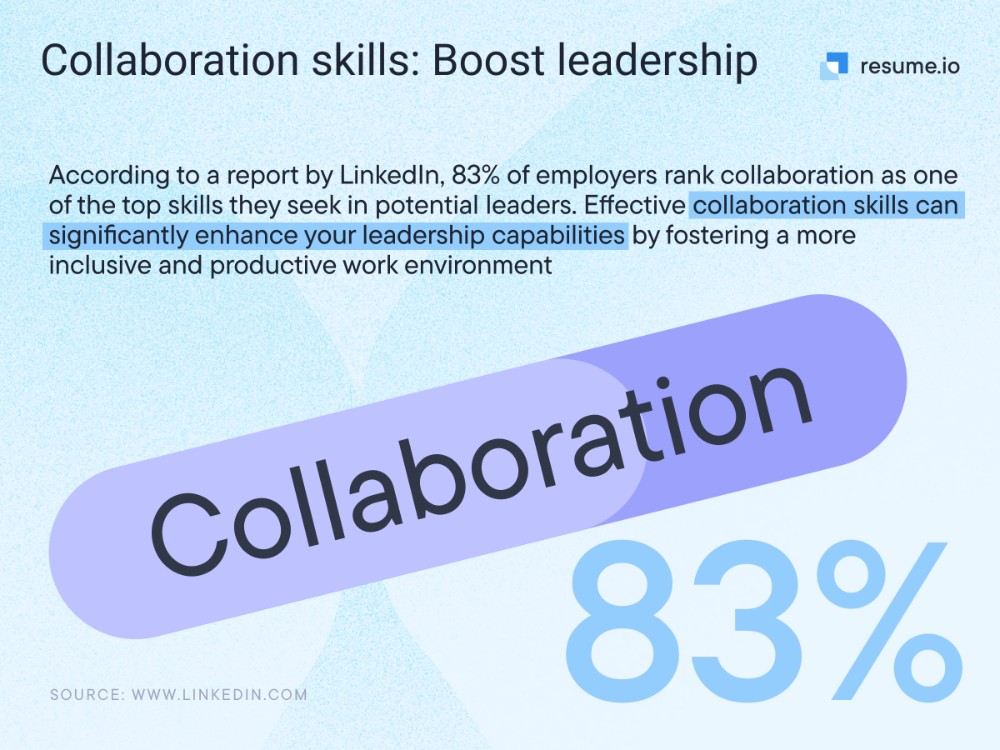
62. 37-percentage point increase in the number of employees reporting high engagement who report to a human leader versus employees who do not consider their leader to be a human leader. This increase is significant—highly engaged employees improve their team’s performance by up to 27%. (Gartner)
63. Only 29 percent of employees say their leader is always open to using ideas/practices from outside the company to improve performance. (Leadership IQ)
64. 25 percent of respondents report that their leaders are passionate and inspire their people to the best possible extent. (McKinsey)
65. Only 46 percent of leaders report that they definitely trust their direct manager to do what is right. More troubling, only 32 percent say they trust senior leaders at their organization. (DDI)
66. Only 26 percent of employees say their leader always responds constructively when employees share their work problems. (Leadership IQ)
67. Only 5% of organizations say that they have the capability that they need to achieve their business goals. (McKinsey)
Key takeaways
The diverse array of leadership statistics presented in this article underscores the profound impact of effective leadership on organizational success and employee well-being. From fostering inclusive environments to adapting to new leadership trends, the data highlights the multifaceted nature of modern leadership.
As we move forward in an ever-changing business landscape, these insights serve as a compass for leaders aiming to navigate the complexities of their roles.
Embracing the lessons from these statistics can empower current and aspiring leaders to cultivate environments that not only drive success but also inspire innovation and resilience in their teams.
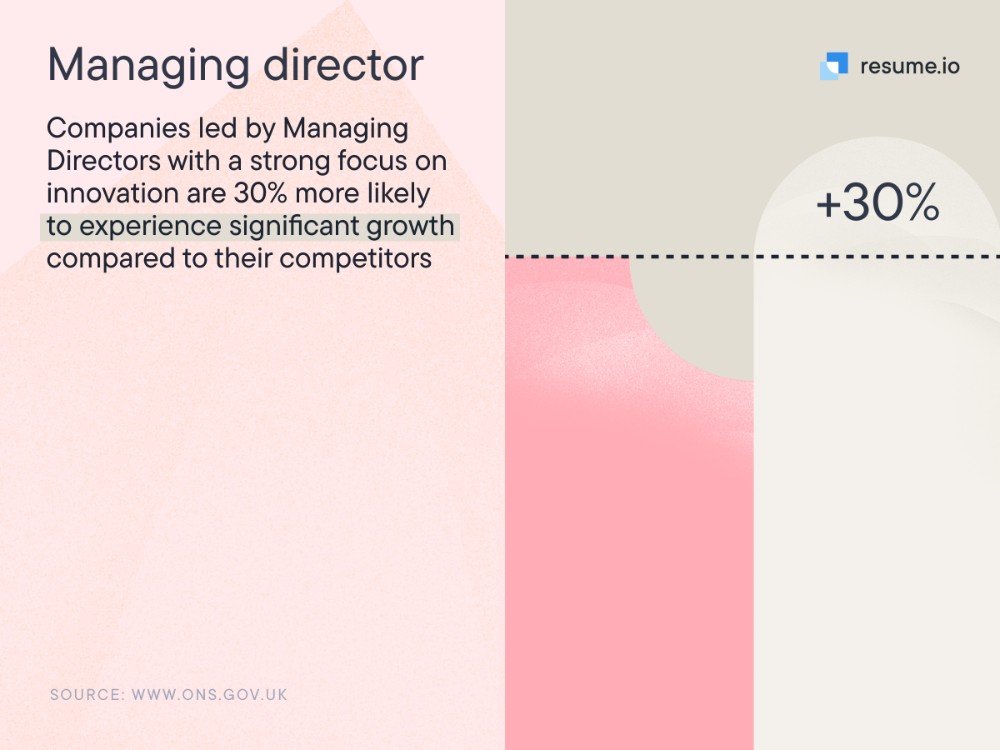
https://www.ddiworld.com/global-leadership-forecast-2023#
https://www2.deloitte.com/content/dam/Deloitte/us/Documents/US_Missing_Pieces_7th_edition_report.pdf
https://trainingindustry.com/wiki/learning-services-and-outsourcing/size-of-training-industry/
https://www.mckinsey.com/featured-insights/diversity-and-inclusion/women-in-the-workplace
https://www.glassdoor.com/employers/resources/hr-and-recruiting-stats/
https://www.leadershipiq.com/blogs/leadershipiq/leadership-development-state
https://www.octanner.com/global-culture-report/2021-leadership
https://www.pwc.com/gx/en/issues/c-suite-insights/ceo-survey.html
https://www.zenbusiness.com/blog/the-stress-of-being-a-manager/





